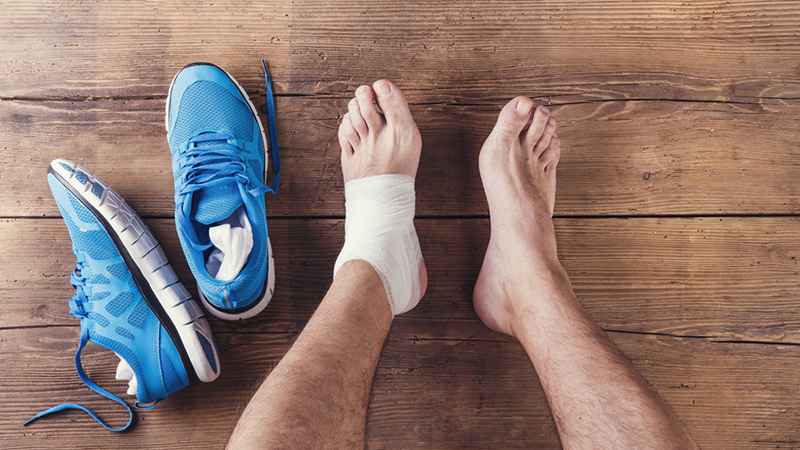
The who, what, where and why of getting hurt.
It’s a fact of life that most people find themselves injured from time to time during their lifetimes. Injuries are a common complaint of many who lead active lifestyles, but they frequently occur in coach potatoes as well.
What gives?
Too little or too much physical activity can contribute to an injury. Injuries also can result from trauma, such as impacts experienced in sports like football or boxing, or can result from accidents such as auto collisions or falls. Injuries also can be caused by illness or disease.
While we hear more about trauma, most people more frequently develop what we can call common injuries. These are more vague, and difficult to diagnose, because they are functional and potentially can resolve over time. They are sometimes referred to as minor, although common injuries are a form of impairment, a disability that can reduce quality of life, prevent us from reaching our true human potential, and even affect our livelihood.
Common injuries can be categorized much like traumatic injuries, as acute and chronic.
- An acute injury includes a twisted ankle, lifting that triggers back pain, or a fall. Sometimes we don’t feel the injury until the next morning. An acute injury can linger on and become a chronic one.
- Chronic injuries often just appear, sometimes building over a period of days or weeks. Many people attribute no particular incident to its cause. Sometimes, these injuries come and go, usually the result of some other chronic problem that never heals.
The acute-chronic model can get blurred as we don’t always feel an injury developing until it’s too late. Sitting too much is an example. One day you get up from your desk or out of your car and wham — acute back pain caused by the chronic stress of sitting.
Common injuries are still complex physical and biochemical disturbances in our bodies that may or may not produce pain, disability and vulnerability to other physical and biochemical impairments. They are also quite different and unique even among individuals with seemingly the same knee injury, for example. This is not usually the case in the event of trauma, where a torn meniscus or fractured femur has a clear diagnosis. Most common injuries are functional in nature, with no real diagnosis other than an assessment of muscle imbalance from overuse, poor-fitting shoes or other physiologic reasons.
Pain itself adds an emotional component to physical and biochemical injuries. And together with some level of disability, injuries can impair quality of life, restrict natural movement and can lead to other injury or illness.
Most importantly, most injuries are both preventable and relatively easy to correct. Those who are healthiest have fewer injuries, and if a problem occurs the body is better able to correct it in a reasonable amount of time.
This article reviews the injury epidemic — the unexpectedly high rates of injury for those of us in a low-risk active lifestyle. Other articles on this website and in my books discuss ways to prevent and correct injuries, how to find a health practitioner, and other associated factors.
While I won’t address automobile or work-related injuries, the timing of these incidents provides an indication of the most common cause — inattention. This is often due to fatigue or hunger and resulting blood-sugar swings, which contribute to reduced brain function.
Who and (who doesn’t) get hurt
Most people get injured during their lifetime. Athletes in contact sports get hurt frequently, closely followed by endurance athletes, with similar rates by those performing simple exercises like aerobics classes, gym workouts and even walking.
But surprisingly similar injury rates occur in sedentary people, often for different reasons. Even for a non-athlete, a chronic injury can impair day-to-day living and reduce independence, especially in the elderly, reducing quality of life and increasing healthcare costs dramatically.
The fact is, most people on the planet get hurt from some type of physical and or biochemical stress. Being healthy and fit offers great value by helping to prevent injuries, and if one occurs, faster healing.
What
Most injuries have a primary muscle component, whether the pain is in the muscle or not. Most non-traumatic injuries may be caused by muscle imbalance. Once a muscle’s functional capacity is impaired, the secondary effects include pain in the associated joint, ligament, tendon and other physical areas, as well as impaired movement.
Muscles that cross two joints are particularly vulnerable and more commonly injured. Inactivity, especially too much sitting, also raises the risk of injury. While “strain” and “pull” are commonly used words to describe problems, muscle imbalance may be the most frequent cause of common injuries. Muscle fatigue and/or imbalance can also play a role in the development of stress fractures in bones.
Where
If muscles are a common area of injury, it’s important to ask where in the muscle does the injury occur. While we can’t feel this difference, it’s important because the location of the injury gives us valuable information about the nature and lifestyle trigger of the problem. So the question is where in the muscle does the injury occur?
We’ve long known that the fast-twitch, anaerobic muscle fibers are more prone to getting injured compared to the slow-twitch aerobic ones. This has been demonstrated in MRI imaging, which also shows these anaerobic fibers can make a person susceptible to injury.
The slow-twitch aerobic muscle fiber, with the potential for long-term energy and fatigue-resistant movement, supports our joints and surrounding soft tissues, and can also help anaerobic fibers work better. However, if the aerobic system is not well developed, this function can be diminished.
Why
In short, we get hurt because we do something that disrupts our natural balance. For example, poor diet can contribute to chronic inflammation, or we wear the wrong shoes, or over- or under-exercise. All these and other stresses can cause muscle imbalance.
Reduction in brain and body health and fitness are an overall reason for such high rates of injuries. Specific examples include:
- The lack of warmup for exercise or work-related activity.
- Muscle fatigue (often from too much or intense physical activity), which is usually the result of the overuse of aerobic or anaerobic muscles.
- Muscle imbalance, which predisposes for an injury that might not otherwise happen.
- Poor aerobic function.
- Acute or chronic brain dysfunction.
Basically, a healthy brain and body can correct muscle imbalance.








